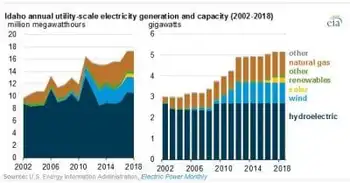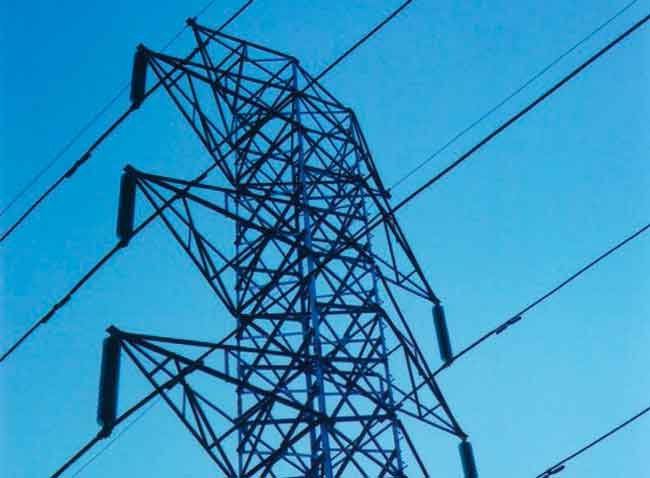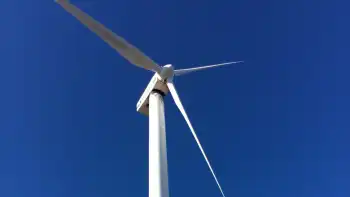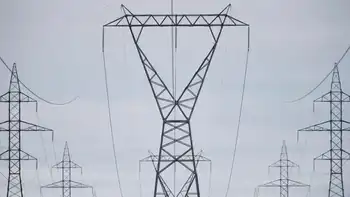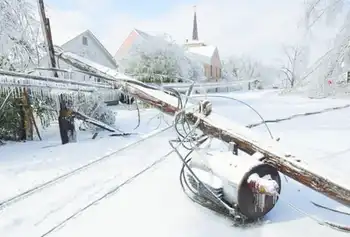CO2 “scrubber” captures greenhouse gas
By Electricity Forum
Arc Flash Training CSA Z462 - Electrical Safety Essentials
Our customized live online or in‑person group training can be delivered to your staff at your location.

- Live Online
- 6 hours Instructor-led
- Group Training Available
In research conducted at the U of C, Keith and a team of researchers showed it is possible to reduce carbon dioxide (CO2) – the main greenhouse gas that contributes to global warming – using a relatively simple machine that can capture the trace amount of CO2 present in the air at any place on the planet.
“At first thought, capturing CO2 from the air where it’s at a concentration of 0.04 per cent seems absurd, when we are just starting to do cost-effective capture at power plants where CO2 produced is at a concentration of more than 10 per cent,” says Keith, Canada Research Chair in Energy and Environment.
“But the thermodynamics suggests that air capture might only be a bit harder than capturing CO2 from power plants. We are trying to turn that theory into engineering reality.”
The research is significant because air capture technology is the only way to capture CO2 emissions from transportation sources such as vehicles and airplanes. These so-called diffuse sources represent more than half of the greenhouse gases emitted on Earth.
“The climate problem is too big to solve easily with the tools we have,” notes Keith, director of the Institute for Sustainable Energy, Environment and Economy’s (ISEEE) Energy and Environmental Systems Group and a professor of chemical and petroleum engineering.
“While it’s important to get started doing things we know how to do, like wind power (or) nuclear power and ‘regular’ carbon capture and storage, it’s also vital to start thinking about radical new ideas and approaches to solving this problem.”
Energy-efficient and cost-effective air capture could play a valuable role in complementing other approaches for reducing emissions from the transportation sector, such as biofuels or electric vehicles, says David Layzell, ISEEEÂ’s Executive Director.
“David Keith and his team have developed a number of innovative ways to achieve the efficient capture of atmospheric carbon. That is a major step in advancing air capture as a solution to a very pressing problem,” Layzell says.
“David Keith’s vision and originality are key factors in our ranking this year as the top engineering school in Canada for sustainability initiatives, both in terms of research and curriculum,” says Elizabeth Cannon, Dean of the Schulich School of Engineering. “Leaders like this are not commonplace, and we are proud to get behind this kind of leadership at the Schulich School.”
Air capture is different than the carbon capture and storage (CCS) technology which is a key part of the Alberta and federal governmentsÂ’ strategies to reduce greenhouse gas emissions. CCS involves installing equipment at, for example, a coal-fired power plant to capture carbon dioxide produced during burning of the coal, and then pipelining this CO2 for permanent storage underground in a geological reservoir.
Air capture, on the other hand, uses technology that can capture – no matter where the capture system is located – the CO2 that is present in ambient air everywhere.
“A company could, in principle, contract with an oilsands plant near Fort McMurray to remove CO2 from the air and could build its air capture plant wherever it’s cheapest – China, for example – and the same amount of CO2 would be removed,” Keith says.
Keith and his team showed they could capture CO2 directly from the air with less than 100 kilowatt-hours of electricity per tonne of carbon dioxide. Their custom-built tower was able to capture the equivalent of about 20 tonnes per year of CO2 on a single square metre of scrubbing material – the average amount of emissions that one person produces each year in the North American-wide economy.
“This means that if you used electricity from a coal-fired power plant, for every unit of electricity you used to operate the capture machine, you’d be capturing 10 times as much CO2 as the power plant emitted making that much electricity,” Keith says.
The U of C team has devised a new way to apply a chemical process derived from the pulp and paper industry cut the energy cost of air capture in half, and has filed two provisional patents on their end-to-end air capture system.
The technology is still in its early stage, Keith stresses. “It now looks like we could capture CO2 from the air with an energy demand comparable to that needed for CO2 capture from conventional power plants, although costs will certainly be higher and there are many pitfalls along the path to commercialization.”
Nevertheless, the relatively simple, reliable and scalable technology that Keith and his team developed opens the door to building a commercial-scale plant.
Richard Branson, head of Virgin Group, has offered a $25-million prize for anyone who can devise a system to remove the equivalent of one billion tonnes of carbon dioxide or more every year from the atmosphere for at least a decade.
Keith and his team’s research this summer, which included an outdoor test of their capture tower in McMahon Stadium in Calgary as a dramatic setting, is featured in an episode of Discovery Channel’s new “Project Earth” series on television.





